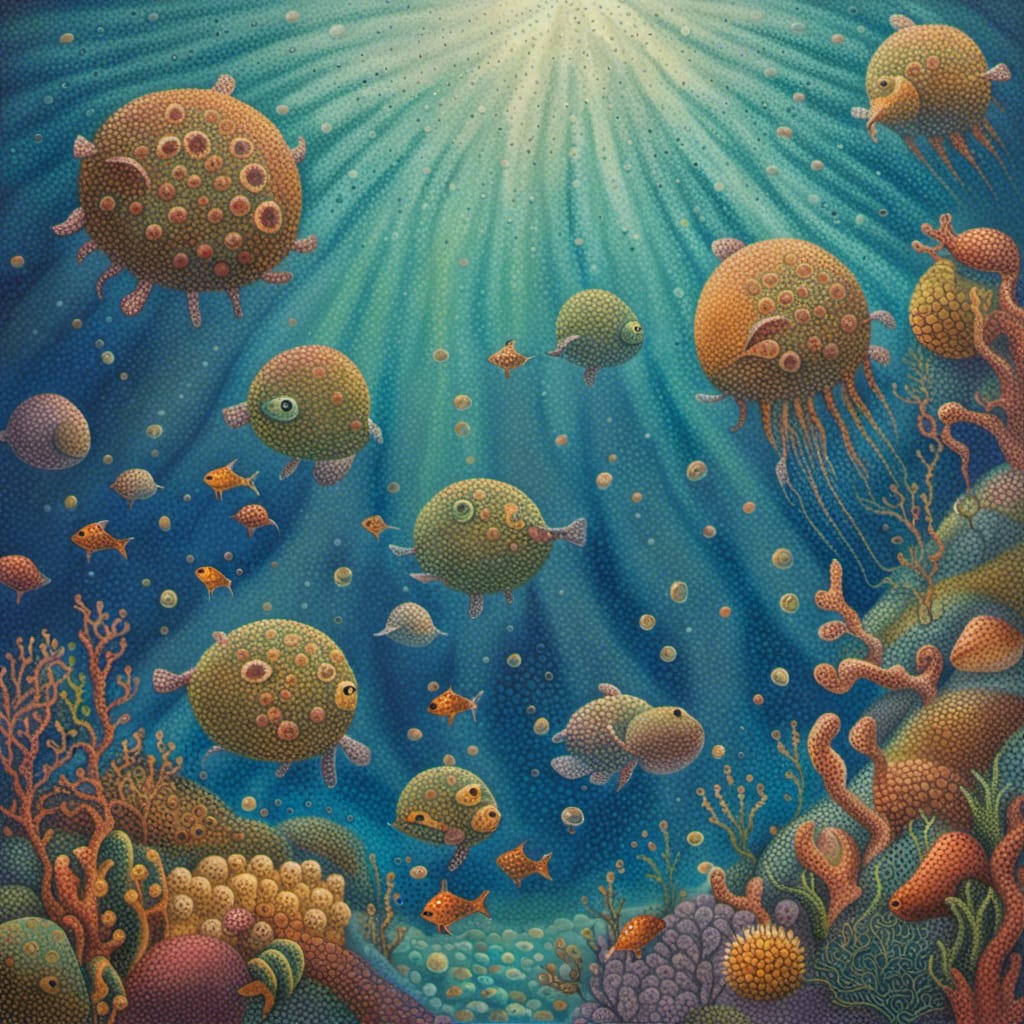
Art has an incredible way of captivating our senses and emotions, allowing us to explore the world through the eyes of the artist. While many artistic techniques have left their mark on history, few can rival the beauty and allure of pointillism.
This extraordinary style of painting, pioneered by the post-impressionist Georges Seurat, takes us on a journey through a sea of dots, transforming colors into an enchanting mosaic of art.
Intro 🫥
In this blog post, we’ll dive deep into the captivating world of pointillism and explore the magic behind this mesmerizing masterpiece.
The Origin of Pointillism
In the late 19th century, the art world was at a crossroads, yearning for something fresh and innovative. Georges Seurat, a visionary French artist, took up the mantle and embarked on a journey to reinvent the way art was perceived. His breakthrough came with the creation of his iconic painting “A Sunday Afternoon on the Island of La Grande Jatte,” a landmark piece that marked the birth of pointillism.
What Does Pointillism Mean?
Pointillism is derived from the French word “point,” which means dot. Seurat, along with fellow artist Paul Signac, explored the idea of using small, distinct dots of pure color instead of traditional brushstrokes to create a harmonious composition. These dots were applied meticulously, resulting in a unique and revolutionary approach to painting.
The Method Behind the Magic
Pointillism may seem like a simple concept – applying dots on a canvas – but the true magic lies in the methodical precision and artistic vision of the painter. Each dot may seem insignificant on its own, but when viewed from a distance, they blend together, creating stunning optical effects and vibrant hues that are difficult to achieve through conventional means.
Optical Blending
Seurat and Signac believed that by using individual dots of color, the eye of the observer would mix and blend the hues optically, resulting in a more vivid and engaging visual experience. This technique, known as “optical blending,” was a radical departure from traditional blending on the palette, making pointillism an intricate dance between the artist’s intention and the viewer’s perception.
The Beauty in Patience
Pointillism demands patience and unwavering dedication from the artist. Each painting requires an immense amount of time and meticulous attention to detail, as thousands upon thousands of dots are painstakingly placed onto the canvas. This level of dedication is not only a testament to the artist’s skill but also a reflection of their passion for the art form.
In a world where instant gratification often rules, pointillism reminds us of the beauty and rewards of patience. As the painting slowly takes shape, the artist’s commitment to their craft shines through, leaving us with a profound appreciation for the artistry behind each masterpiece.
Embracing Chaos and Harmony
One might wonder how an artwork comprised of countless dots can convey a coherent and harmonious image. It is in the convergence of chaos and harmony that pointillism truly flourishes. As viewers, we are invited to engage with the artwork from varying distances, each perspective offering a unique and awe-inspiring encounter.
Up close, we witness the seemingly chaotic arrangement of individual dots, where each stroke carries its own significance. Yet, as we step back, the magic unfolds, and the dots converge to form a mesmerizing tapestry of color and form. This dynamic interplay between chaos and harmony is what sets pointillism apart, allowing us to immerse ourselves in the painting’s intricacies, and yet, be captivated by its unity.
Examples
Check out some examples of pointillist art below.
Conclusion
Pointillism stands as a timeless testament to the boundless creativity of human expression. Through the meticulous arrangement of countless dots, this captivating style of painting bridges the gap between art and science, drawing us into a world of optical wonder.
The legacy of Seurat and Signac lives on through the masterpieces they left behind, inspiring generations of artists to embrace patience, embrace chaos, and embrace the enchanting allure of pointillism. So, the next time you encounter a pointillist painting, take a step closer, and then, step back, and let the magic unfold before your eyes.









